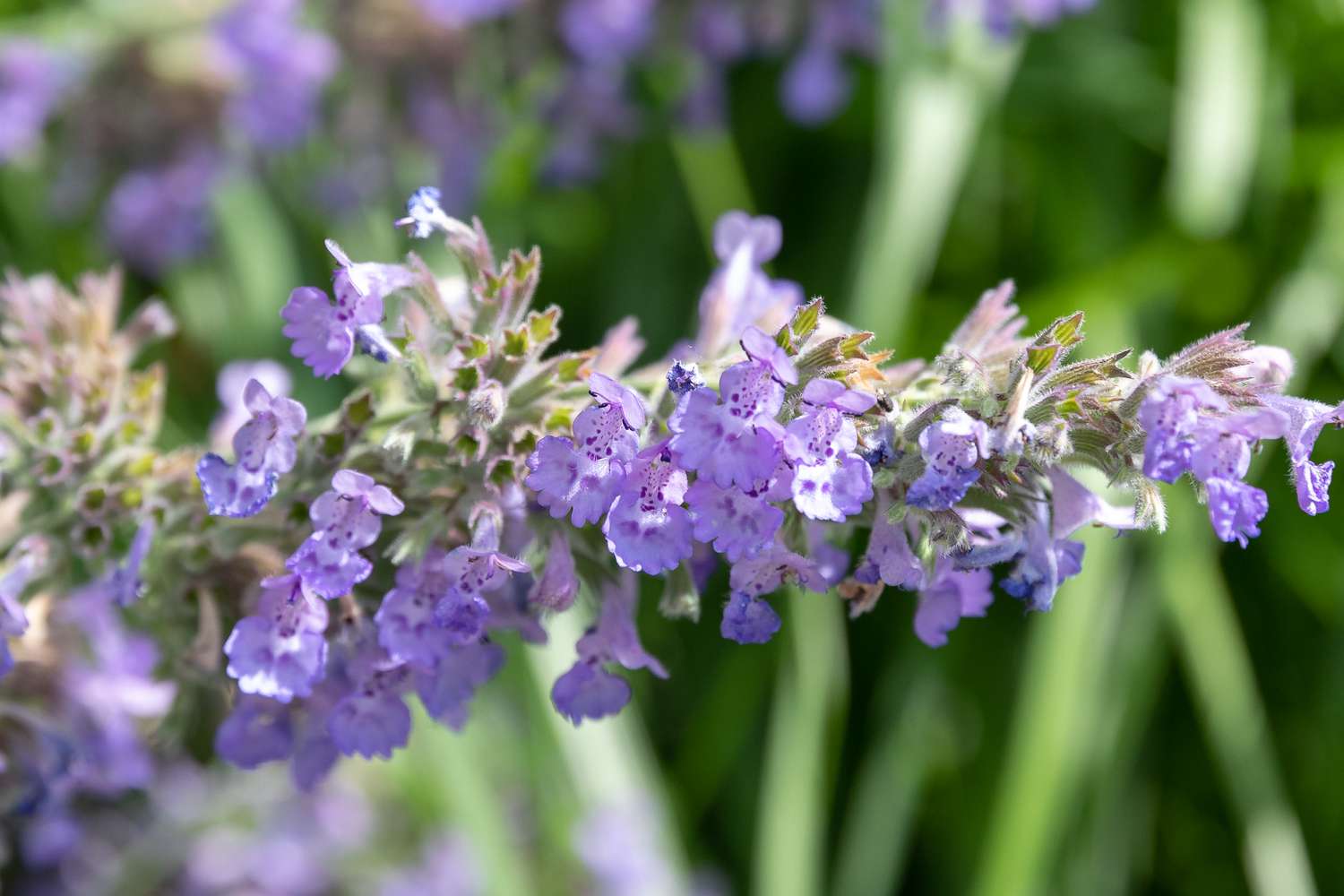
Catmint, also known as Nepeta cataria, is a fascinating plant that has captured the hearts of both humans and feline companions for centuries. This perennial herb, belonging to the mint family, is not only known for its lovely appearance and delightful fragrance but also for its numerous benefits and uses. Whether you are an avid gardener, a cat lover, or simply have an interest in plants, you will be intrigued by the astounding facts surrounding catmint. From its medicinal properties to its curious effect on cats, catmint is a plant that holds many secrets waiting to be discovered. In this article, we will explore nine captivating facts about catmint that will leave you awestruck and craving to learn more about this versatile herb.
Key Takeaways:
- Catmint, also known as Nepeta cataria, is a versatile herb with medicinal, culinary, and repellent properties. It’s loved by cats for its euphoric effect and by humans for its calming scent and stress-relieving benefits.
- Catmint, a member of the mint family, is easy to grow and attracts beneficial pollinators. It can be used to make soothing tea and adds a unique flavor to dishes, teas, and cocktails.
Catmint, also known as Nepeta cataria, is a member of the mint family.
Catmint belongs to the Lamiaceae family, which includes other popular herbs such as basil, rosemary, and thyme.
Catmint is well-known for its effect on cats.
When cats come into contact with catmint, it often triggers a euphoric response. They may roll, jump, or rub against it, displaying playful behavior.
Catmint has been used for centuries for its medicinal properties.
People have used catmint as a natural remedy for various health issues, including indigestion, anxiety, and insomnia.
Catmint is a great addition to any herb garden.
Not only is it easy to grow, but it also attracts beneficial pollinators like bees and butterflies with its fragrant flowers.
Catmint is a versatile herb that can be used in culinary creations.
Its leaves can be used to add a unique flavor to dishes, teas, and even cocktails.
Catmint is also known for its repellent properties.
The strong scent of catmint can act as a natural deterrent for pests like mosquitoes and ants.
Catmint is native to Europe and parts of Asia, but it can be found worldwide.
Due to its adaptability, catmint has been successfully cultivated in many regions, making it a popular plant choice for gardeners.
Catmint is not only loved by cats, but it also has its human fans.
Many people enjoy the calming scent of catmint and use it as a stress-relieving herb.
Catmint can be used to make a soothing tea.
Steeping dried catmint leaves in hot water creates an aromatic herbal tea that is known for its relaxing properties.
Conclusion
In conclusion, catmint is truly an astounding plant with a multitude of fascinating facts. From its rich history of medicinal uses to its irresistible appeal to feline friends, catmint has captured the hearts of many. Its vibrant blooms, aromatic leaves, and ability to attract beneficial insects make it a favorite among gardeners as well. Whether you’re looking to add color to your garden, entice pollinators, or simply provide a source of herbal relief, catmint is a versatile and valuable addition. So go ahead and embrace the magic of catmint, and let its wonders unfold in your own backyard.
FAQs
Q: What is catmint?
A: Catmint, also known as Nepeta cataria, is a perennial herb from the mint family. It is known for its gray-green leaves and clusters of tubular, lavender flowers.
Q: Is catmint safe for cats?
A: Yes, catmint is safe for cats. In fact, it is highly attractive to them and often used in toys or as a treat. It has a calming effect on cats and can help relieve stress or anxiety.
Q: Can catmint be grown indoors?
A: Yes, catmint can be grown indoors as long as it receives adequate sunlight and well-drained soil. It can be grown in pots or containers and enjoyed as a decorative plant.
Q: How do I care for catmint?
A: Catmint is relatively low-maintenance. It prefers full sun and well-drained soil. Regular watering and occasional pruning to promote bushier growth are recommended.
Q: Does catmint have any medicinal properties?
A: Yes, catmint has been used for centuries in herbal medicine. It is believed to have calming and sedative properties and can be used to alleviate symptoms of stress, insomnia, and digestive ailments.
Q: Can I use catmint in cooking?
A: Yes, catmint leaves can be used in cooking to add a subtle minty flavor to dishes. It pairs well with salads, teas, or as a garnish.
Q: Does catmint attract pollinators?
A: Yes, catmint is highly attractive to bees, butterflies, and other beneficial insects. Planting catmint in your garden can help attract these pollinators, benefiting the overall ecosystem.
Q: Can I propagate catmint from cuttings?
A: Yes, catmint can be propagated from cuttings. Simply take a stem cutting from a healthy plant, remove the lower leaves, and place it in a well-draining potting mix. Keep the soil moist until roots form.
Q: How tall does catmint grow?
A: Catmint can grow up to 2-3 feet tall, depending on the variety. It forms clumps of foliage and produces tall spikes of flowers during the blooming season.
Catmint's fascinating facts may have piqued your curiosity about other incredible plants and gardening topics. Dymondia's drought-tolerant properties make it a smart choice for water-wise gardens. Effective landscaping techniques can transform outdoor spaces into stunning, functional areas. Herbs' versatility in cooking, medicine, and aromatherapy is just the beginning of their amazing qualities.
Was this page helpful?
Our commitment to delivering trustworthy and engaging content is at the heart of what we do. Each fact on our site is contributed by real users like you, bringing a wealth of diverse insights and information. To ensure the highest standards of accuracy and reliability, our dedicated editors meticulously review each submission. This process guarantees that the facts we share are not only fascinating but also credible. Trust in our commitment to quality and authenticity as you explore and learn with us.


